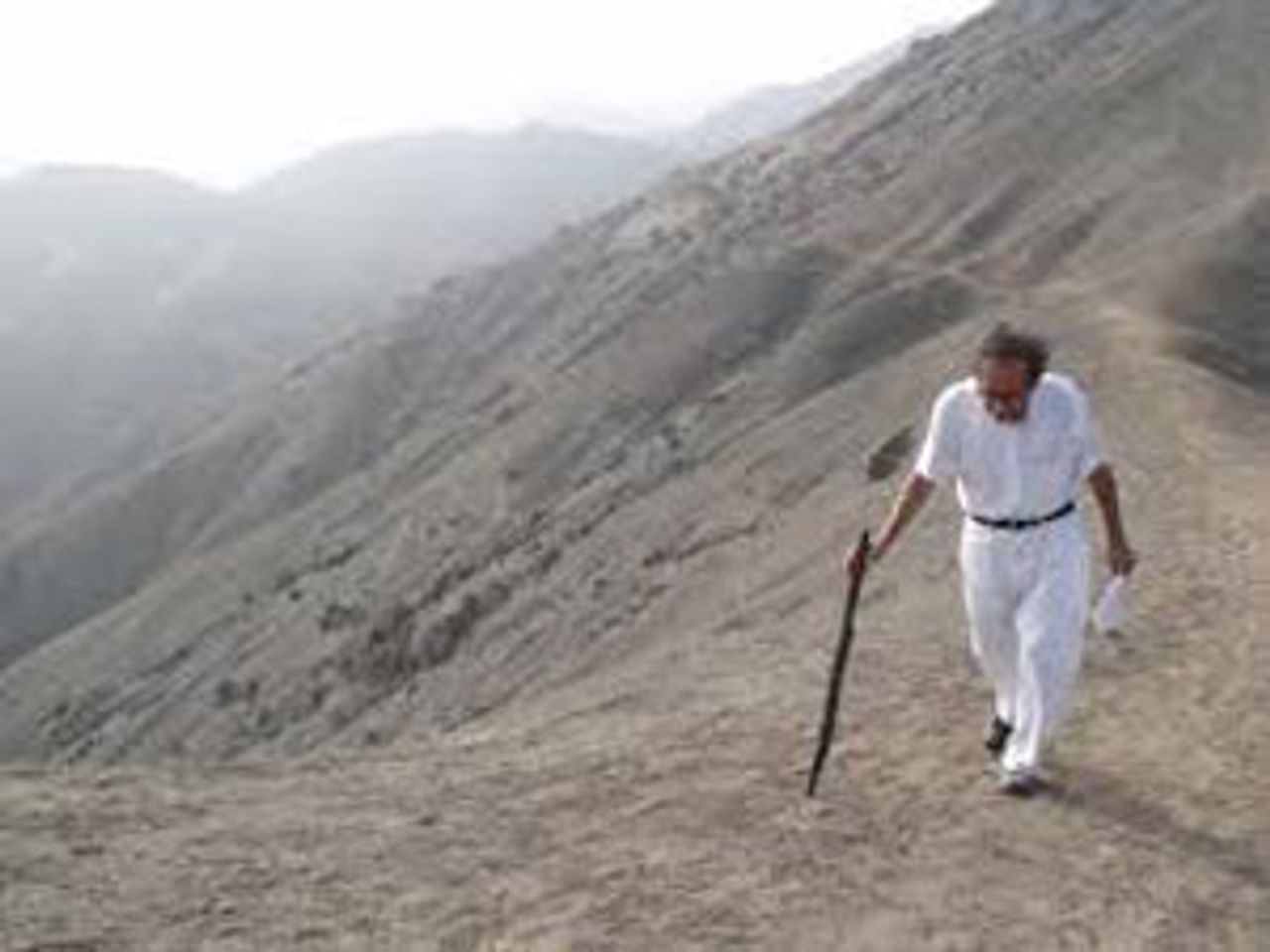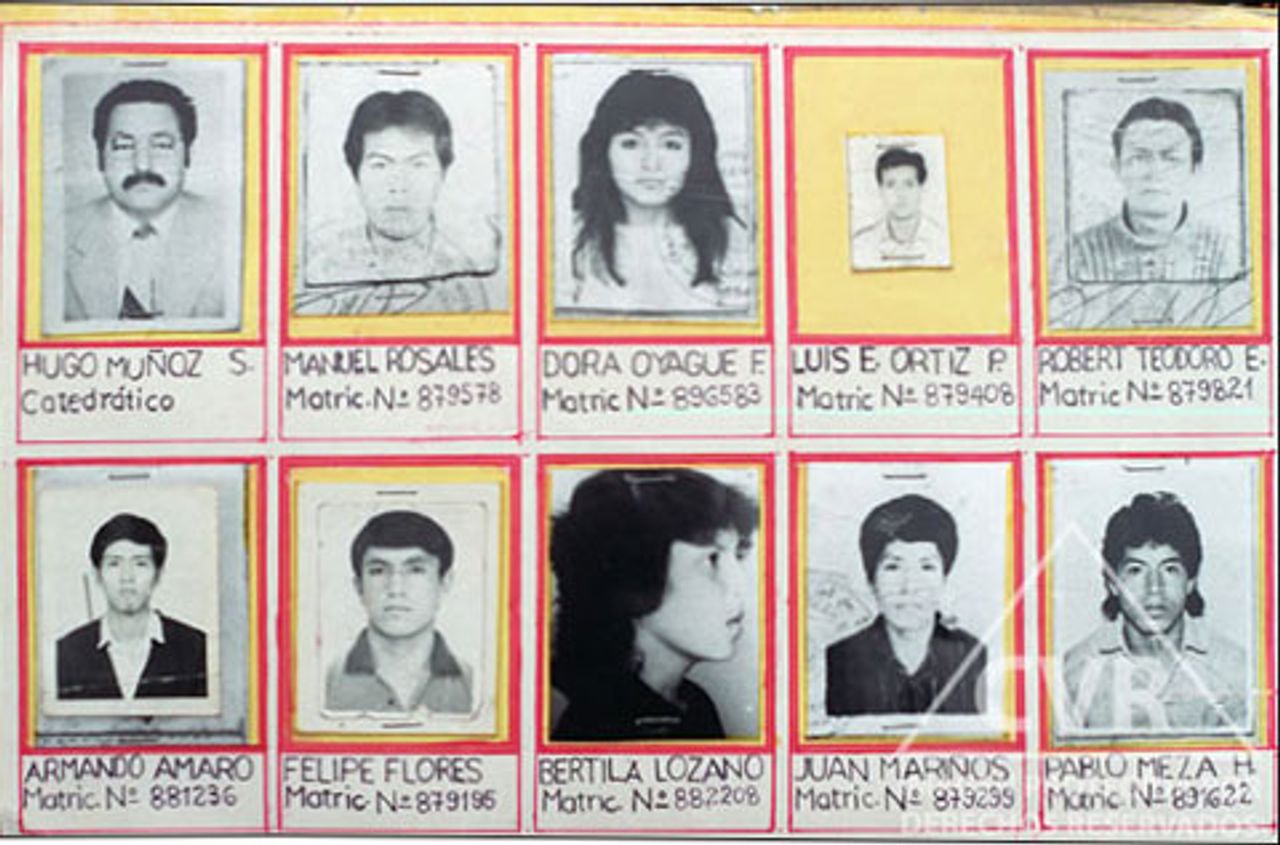Directed and written by Amanda Gonzales

On July 18, 1992, 13 days after Peruvian President Alberto Fujimori dissolved Congress and assumed dictatorial powers in an extra-constitutional coup, known in Peru as the Autogolpe, members of the National Intelligence Service, some of whom also belonged to the infamous Grupo Colina paramilitary death squad, invaded the campus of the Enrique Guzman y Valle National Education University (popularly known as La Cantuta).
The Grupo Colina had been created in 1991 for the purpose of assassinating opponents of the regime and terrorizing the population under the false pretext of prosecuting a war against the Shining Path, the Maoist guerrilla movement.
The troops brutalized the students at La Cantuta and kidnapped, tortured and murdered nine of them (Bertila Lozano Torres, Dora Oyague Fierro, Luis Enrique Ortiz Perea, Armando Richard Amaro Cóndor, Robert Édgar Teodoro Espinoza, Heráclides Pablo Meza, Felipe Flores Chipana, Marcelino Rosales Cárdenas, y Juan Gabriel Mariños Figueroa) and a professor, Hugo Muñoz Sánchez
A recently released documentary, La Cantuta in the Jaws of the Devil, tells the story of the journalistic investigation that laid bare this episode, which went down in history as the La Cantuta Massacre and until today stands as one of the most emblematic crimes of the Fujimori dictatorship (1990-2000).
Amanda Gonzales, who studies journalism at the Catholic University in Lima, directed the documentary, which details the development of the investigation, the identification of the victims and the brutal repression that befell innocent people linked in some way to the investigation or the victims. Edmundo Cruz, a veteran journalist who led the investigation that exposed the massacre, narrates the documentary.

The film combines a step-by-step presentation of the investigation with news clips from the era and interviews with friends and relatives of the victims, as well as with Cruz’s collaborators in the investigation. It also includes scenes from the trial of Fujimori, who, in 2009, was finally sentenced to 25 years in prison for having ordered the atrocities at La Cantuta as well as another signature crime of his regime, the Barrios Altos massacre.
The actual investigation that is the focus of this documentary began in April 1993, while Fujimori was still in power. The so-called “Democratic Constituent Congress”, convened to draft a new constitution, and established a committee to investigate the disappearances at La Cantuta. In the course of the investigation, Congressman Roger Cáceres received from anonymous sources a charred bone and a map describing how the army unearthed the victims’ remains and reburied them in a new location.
Alarmed by the investigation, a paramilitary squad had unearthed the bodies and buried them once again with the expectation that they would never be found. However, Justo Arizapana, a garbage collector who was working in the area, witnessed this grisly work and drew a map of the new burial site. That map was to become key to the entire investigation.
“Survival instinct made me move from one place to another”, Arizapana declares in the film, “because had I been naïve and stayed in the same place, those army men would have seen me, killed me and buried me alongside the others.”
Upon receipt of the map, Congressman Cáceres sent it to Sí, a news magazine that employed Cruz. Under his leadership, a team of reporters followed the directions given by the map, went to the location and dug up the bodies.
“When we finished that business at Cieneguilla” [the place on the outskirts of Lima where the victims were buried],” declared Cruz, “we didn’t know what was going to happen. Each one of us went home knowing that we had touched the lion’s whiskers.” Indeed, the dictatorship’s reprisals were just about to begin. One of the journalists describes how one day at his children’s kindergarten he found a funeral wreath bearing his name.
Among the others involved in the investigation who faced the regime’s retribution were Juan Mallea, a taxi driver, and radio journalist Luis Jara, who were detained together by the intelligence service and then paraded before the press in prison garb. Both Lara and Mallea were accused of being members of Shining Path. Mallea tells how he was tortured to “confess” that he was the author of the map and that he and Jara were terrorists. He didn’t give in to the torture, however, despite suffering a broken rib and losing many teeth and spending more than a year in jail.
Gilberto Calvo Shocosh was a student of La Cantuta and friend of one of the victims. He provided chilling details of the July 18 kidnapping. At one point, Calvo Shocosh tells Cruz that his own imprisonment at the hands of the regime was linked to the repression at La Cantuta University. His crime? Possessing books of Lenin and Marx (which were required for university studies). Cruz asks him how many years he spent in prison. “Twelve” he responds calmly. Cruz is speechless.
In a public audience during the Commission of Truth and Reconciliation (called to investigate the crimes committed during the 20 years of dirty war between the Peruvian army and Shining Path), Gisella Ortiz, sister of one of the victims, gave testimony on how the military occupied La Cantuta and with absolute impunity beat, insulted and threatened to kill anyone they wished.
The movie ends with a ceremony of remembrance for the victims. An ending note informs the viewers that there are still 15,000 “disappeared” because of the so called “internal conflict, and that most of them are university students. The La Cantuta massacre is “just one among thousands,” declares the documentary.
The rawness and desolation of the desert, along with Cruz’s fragile narration at the beginning of the film, establish a tone of intrigue and menace that pervades the entire documentary. “In working in this investigation one collides with unknown powers and takes the challenge … but sometimes, without considering the risks and only with the passing of time, with the occurrences and evidence you realize the danger you’re in,” explains Cruz, as he wanders by what seems to be an army shooting range in Lima’s bleak desert. The location seems ominous. Was it there where they buried the victims?
The video effectively holds the viewer’s attention with its gripping tale of the uncovering of the massacre and the brutal repression unleashed by the dictatorship, desperate to prevent the truth from coming out. However, the director never widens her lens to probe why the Fujimori government set up a police dictatorship that committed not one—as is explained in the final notes—but thousands of similar massacres with the same pattern of criminality; there is no attempt to connect the dictatorship’s brutal repression with underlying historical and social processes.
“Basically all that we wanted to accomplish was the reconstruction of the investigation. It’s not a historical documentary. It’s not about the case”, explained Gonzales in an interview. But, what can one say about a piece of art (especially a documentary) that presents only one piece of the puzzle as a finished product, leaving it to others the task of assembling the complete image?
And in this regard, the film raises more questions than it answers. After watching it, one cannot help but ask: Was La Cantuta the first massacre by the Fujimori dictatorship? What was happening in Peru at that time?
The claim, repeated over and over by apologists of the regime, that “extraordinary measures” were necessary to combat Shining Path, became the perfect excuse to silence all those who opposed the dictatorship and create an atmosphere of terror and corruption, where basic rights were systematically violated.
While Fujimori was not the one who created the system of military repression that was unleashed on the country as a response to Shining Path, but, as he himself boasted, under his own government the acts of repression had multiplied. For example, from 1981 to 1991 some 575 Peruvians were convicted of so-called terrorism; but in the 11 months that followed the enactment of the new laws, after the infamous Autogolpe, 589 people were convicted.
By the year 2000, Fujimori’s state terror machine had summarily executed thousands of trade unionists and workers. It had been honed as an instrument for the suppression of the class struggle and the defense of a social system characterized by grinding exploitation and staggering inequality.
“People from younger generations” says Gonzales, “no longer remember the Fujimori government. We are talking about people that right now are citizens and we must tell these stories so that they can form their own opinions. Disinformation is quite dangerous”.
In another interview, the protagonist Cruz states that the project “was born as a product of the conviction that, that 40 per cent of Peruvians are in disagreement with Fujimori’s conviction [on charges relating to the La Cantuta and the Barrios Altos massacres, as well as corruption and illegal phone tapping]. This reveals ignorance; it is a problem of consciousness, a problem of memory and forgetfulness. For this reason we undertook this project”.
It is apparent, however, that more than ignorance is involved. According to press reports, the response to Cruz’s film has included repeated death threats
The films DVD release in April was timely because both candidates who ran for the presidency this past June 5, the winner Ollanta Humala from Gana Perú and his rival Keiko Fujimori, the dictator’s daughter, from Fuerza 2011, are connected to this repression.
In one sequence of the film the candidate herself is shown defending her father’s dictatorial regime: “I, Keiko Fujimori, will lead the fight for the liberty of Alberto Fujimori, “ she exclaims during a political rally. “Five hundred documents have been shown but the question is: where is the evidence?”
President Ollanta Humala, a former army officer, participated in Fujimori’s repressive apparatus. He is linked to the killing of several people in the region of Tingo María. Later on, he was investigated by the judiciary for being connected to abuses against the population of Madre Mía, although the case was closed for lack of evidence. In March of this year, it came to light that many people had been bribed to keep silent about the Madre Mía case.
Gonzales’ La Cantuta in the Jaws of the Devil strikes a blow against the “problem of forgetfulness” described above by Cruz and the director. It brings to life a terrible crime that deserves to be seared into the collective memory of Peru and, indeed, the entire world.
But Gonzales’ and Cruz’s self-imposed limits leave unexplored the social and political contradictions that gave rise to this and so many other crimes as well as their connection, in all but the most superficial sense, to the conditions and struggles confronting Peruvian workers and students today.
The documentary is available online on YouTube (http://www.youtube.com/watch?v=ciUe_l3hSYI)
